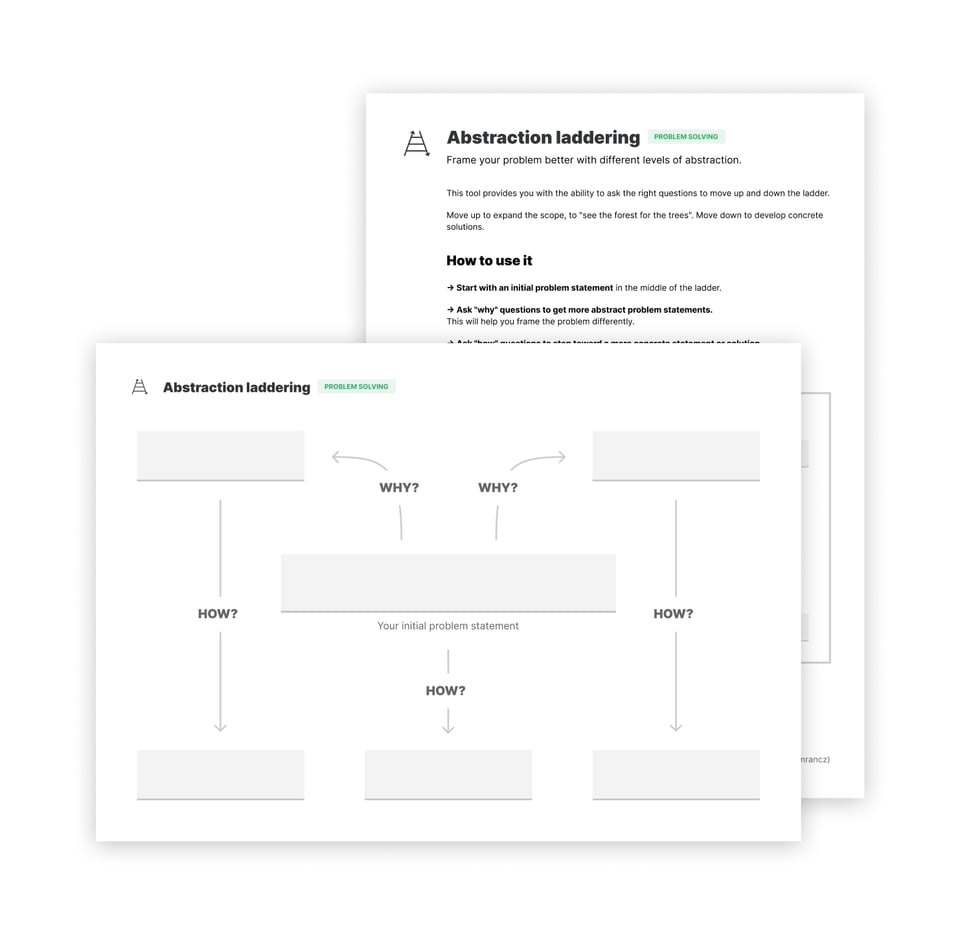Untools is back! How to break down problems and procrastinate productively
I'm back with Untools monthly, starting with first-principles thinking to enhance your problem-solving!
Hi there,
it’s Adam from Untools.co – whether you signed up for this newsletter years ago or yesterday, welcome! It’s been over a year since the last Untools newsletter but now I’m reviving it. You can expect monthly posts to help you think better.
If you’re no longer interested, I understand if you’ll want to unsubscribe. But if you’re still keen on improving your thinking, let’s dive into today’s post.
Today we'll look at first-principles thinking, solving problems by procrastinating and I’ll also share a little bit about what I’ve been up to in relation to Untools.
Thinking tools 101: First principles
Every month, I’ll be reviewing some of the fundamental thinking tools from the Untools collection. Today, we’ll go back to first-principles thinking.
First-principles thinking is about breaking down complex problems into their most basic elements and then reconstructing them from the ground up. Instead of following conventional wisdom or making decisions based on analogies, you identify the fundamental truths and build your solution from there.
How to apply first-principles thinking
Identify and clearly define the problem you’re solving
Break down the problem into its fundamental principles
Create new solutions from scratch based on these principles
This sounds almost deceptively simple. How do you actually break down a problem? The trick lies in asking a lot of questions.
5 whys technique
One of the most effective ways to dig deeper is the 5 whys technique.
Let’s look at an example:
Problem: I'm struggling to learn programming despite taking multiple courses.
Why? I can't seem to retain the concepts I study.
Why? I understand them during the lesson but forget when trying to apply them.
Why? I'm not practicing the concepts in real-world scenarios.
Why? I focus on completing courses rather than building projects.
Why? I believe expertise comes from comprehensive knowledge rather than practical application.
The fifth why in this example reveals how that belief is in opposition to a fundamental principle about acquiring any skill: mastery comes through application, not just consumption of information.
First principles, like in this example, may sound even obvious but sometimes we get so caught up in our problems that we can overlook simple truths. And the first principles thinking is a tool that allows us to cut through our assumptions and see what's really going on. By breaking problems down to their core, we can build solutions that actually work instead of just patching things up.
Abstraction laddering
Practical framework to apply first-principles thinking to solving problems is abstraction laddering.
You start with an initial problem statement in the middle of the ladder.
Ask "why" questions to get more abstract problem statements. This can help you frame the problem differently. You can ask multiple levels of “why” to get to the desired level of abstraction.
Ask "how" questions to step toward a more concrete statement or solution. This helps you come up with different problem statements than the one you started with and enables you to find more innovative solutions.
To make this technique easier to apply, I've created a step-by-step template for abstraction laddering that includes a worked example. You can get it as part of a bundle with 9 other useful thinking tools:

Solving problems by procrastinating
Recently, I’ve been getting stuck at some hard problems at work. My mind would blank out when coming up with solutions or next steps. I remembered this counter-intuitive idea I read about a while ago: deliberate procrastination.
The idea is to force yourself to do nothing for 30 minutes. No phone, no other work, nothing. Our brains hate boredom and this did the trick for me. After a while, my brain naturally drifted back to the problem but this time with new perspectives and ideas that unblocked me.
If you're stuck on something, try deliberately procrastinating. Just step away and do nothing for a while. Don't check social media or switch to other work - that doesn't count. Just let your brain get bored enough to work in the background. It's simple but has worked really well for me.
Where I've been (and where Untools is going)
In the beginning, I mentioned how it’s been well over a year since the last Untools newsletter.
Over the last few years my priority has been family. And the little time I had on the side I used for making Untools App – an attempt to build a product which, however, didn't find the market fit we were hoping for and we’re winding it down.
This is actually good news for Untools.co, though, because now I have the time to go back to writing this newsletter. I'm excited to share more thinking tools, frameworks, and practical applications with you monthly.
Coming next
In the next newsletter, we'll explore Second-Order Thinking – a powerful mental model that helps you look beyond immediate outcomes to consider the cascading effects of your decisions. It's one of my favourite tools for avoiding unintended consequences.
I'd also love to hear from you – what mental models or frameworks would you like me to break down in future posts? Just hit reply and let me know!
Until next month,
Adam
Add a comment: